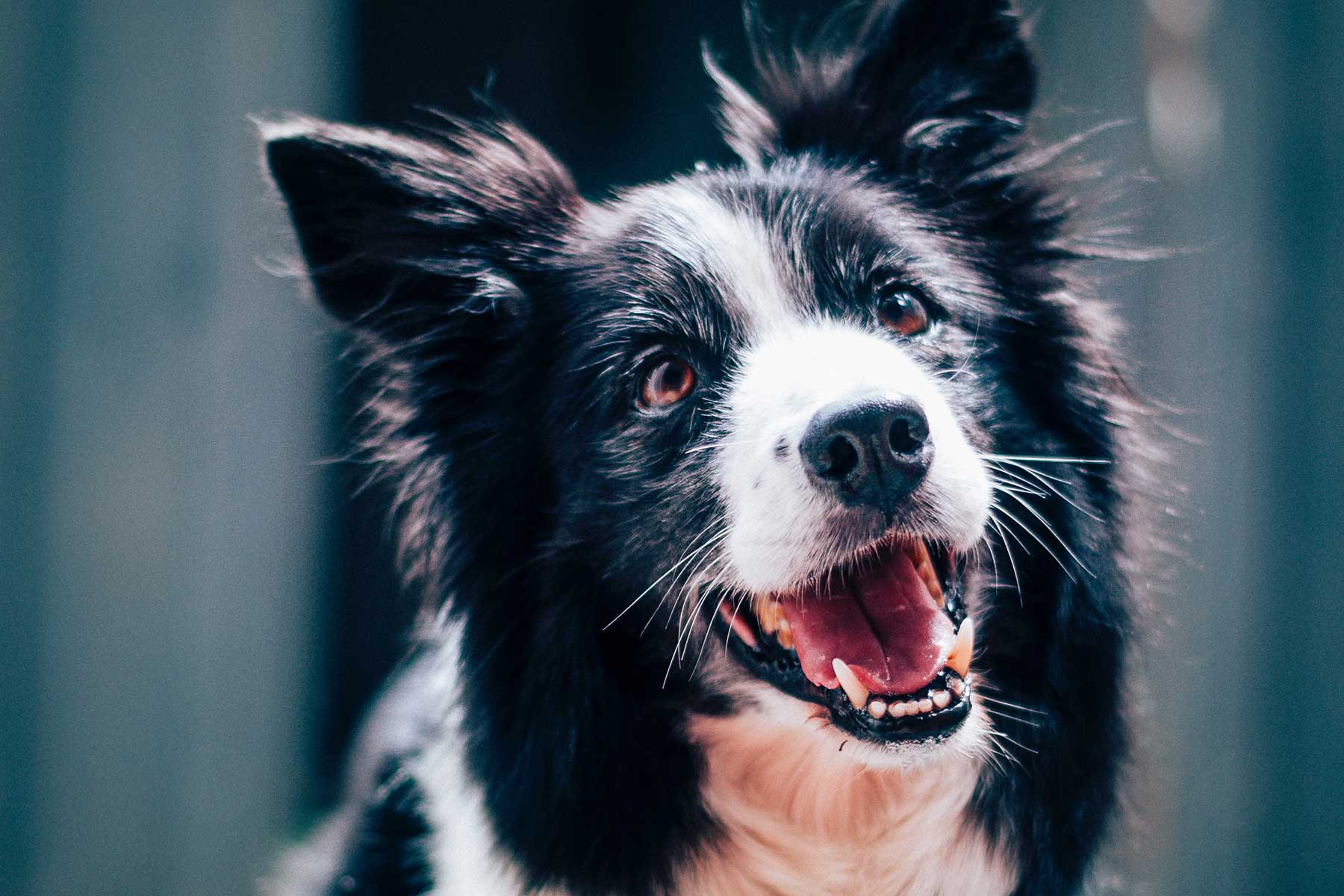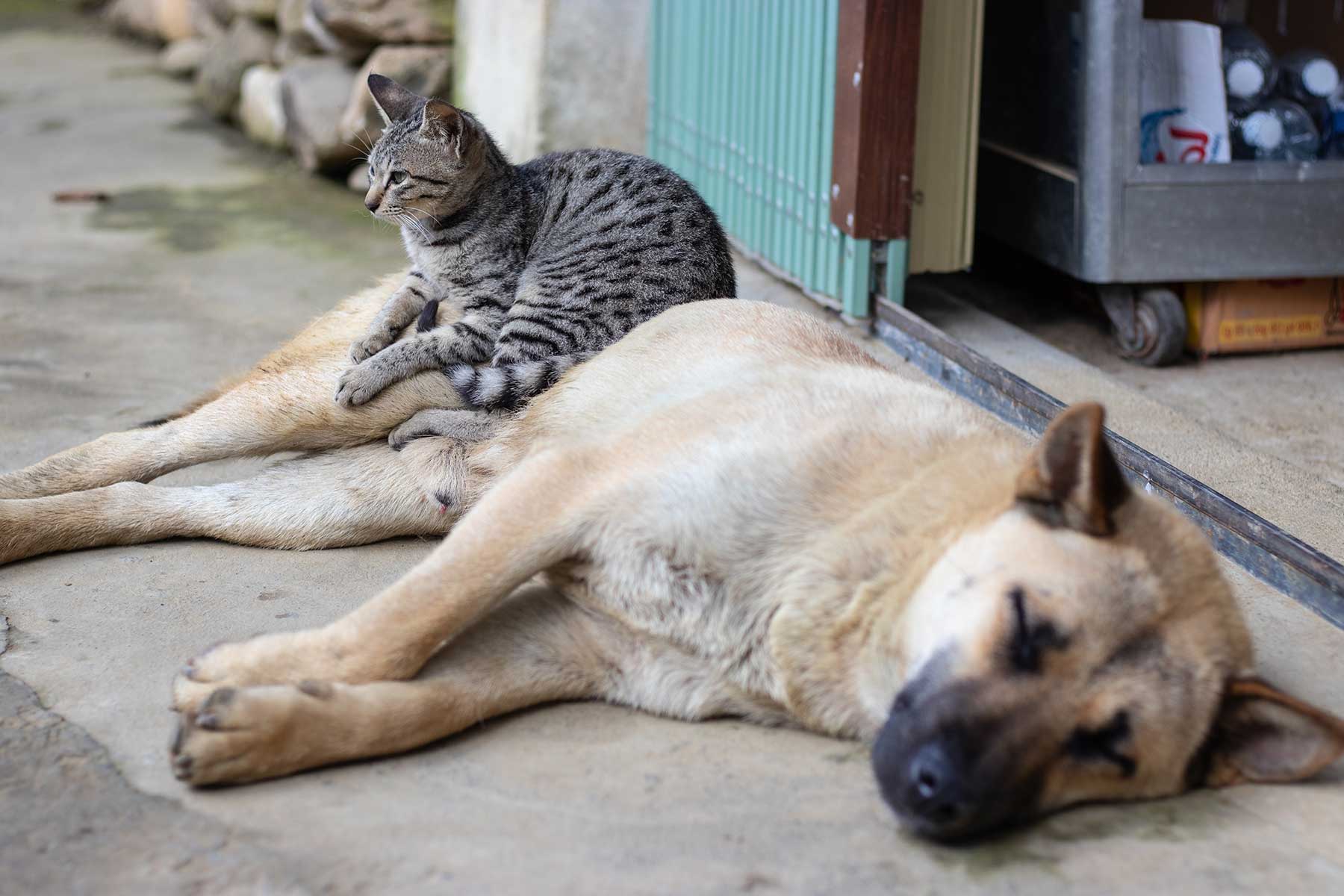There are numerous reasons why a dog might soil the house with urine and/or stools. Determining the specific reason is essential for developing a treatment program. Dogs that soil the home continuously or intermittently from the time they were first obtained may not have been properly house-trained. Dogs that have been previously house-trained may begin to soil the home for medical reasons or behavioural reasons.
Assuming medical causes can be ruled out (see below), some of the behavioural causes can include:
- a change in schedule or routine,
- a change in housing
- being left alone for unusual periods of time
- or any change in the pet’s home that might lead to anxiety.
For example, if you leave a dog alone for longer than the dog is accustomed, or significantly change the daily schedule or routine, your dog may begin to house-soil. Dogs that are exhibiting an increase in anxiety may begin to eliminate in the home due primarily to a loss of control when anxious and not due to spite. Dogs that exhibit separation anxiety may soil the home and require an intensive retraining program.
Why Are You Finding Urine on Upright Objects?
Marking is urination on upright objects. It is most likely to occur on or near the odours, especially the urine, left by other dogs. The volume of urine is usually small. The problem is much more common in intact males but some neutered males and spayed females will mark. Dogs may mark territory for a number of reasons including male hormonal influences, other dogs entering the property, moving to a new household or getting new furniture, or as a response to increased stress or anxiety.
Why Does Your Dog Urinate When He/She Meets New People or When You Come Home?
Two specific types of house-soiling, submissive and excitement urination differ from most other forms of house-soiling in that the dog has little control over their elimination. Submissive urination occurs when a person approaches, reaches out, stands over or attempts to physically punish them. A dog not only urinates but may show other signs of submission such as ears back, retraction of lips, avoidance of eye contact, and cowering. Although this problem can be seen in dogs of any age, submissive urination is most commonly seen in puppies and young female dogs. Owner intervention in the form of verbal reprimands or punishment only serve to aggravate the problem by making a dog act more submissive which leads to further urination. Excitement urination is similar to submissive urination except the stimuli that lead to elimination are those that lead to excitement, particularly greeting and giving affection to a dog. These dogs may also be overly submissive but not necessarily.
What Medical Problems Could Cause Your Dog to House-Soil?
There are numerous medical problems that could cause or contribute to house-soiling, and these become increasingly more common as a dog ages. Medical problems that cause an increased frequency of urination include:
- bladder infections,
- bladder stones or crystals, or
- bladder tumours,
- problems that cause a decrease in control or mobility such as neurological deterioration or arthritis, and
- problems that cause an increase in urine volume (amount) such as kidney disease, liver disease, diabetes, or Cushing’s disease could all contribute to indoor elimination.
Certain drugs such as steroids may also cause a dog to drink more and therefore urinate more.
For dogs that defecate in the house, any condition that leads to more frequent defecation such as:
- colitis,
- problems that cause an increased volume of stool such as problems with absorption or lack of digestive enzymes, and
- problems that affect a dog’s mobility or control such as arthritis or neurological deterioration.
As dogs age, cognitive brain function decline could also contribute to indoor elimination.
How Can The Cause of House-Soiling Be Determined?
For dogs that are house-soiling, a physical examination and medical history are first required. For most cases, a urinalysis and general blood profile will also be needed, and additional tests such as radiographs and contrast studies may be indicated based on the results. If there is any abnormality in elimination frequency or amount, stool colour or consistency or urine odour, more comprehensive laboratory tests may be necessary. Once medical problems have been ruled out, it will then be necessary to determine if your dog was ever completely house-trained, whether there were changes in the pet’s household or schedule at the time the problem started, whether your dog is marking or eliminating on horizontal surfaces, whether or not the pet is exhibiting anxiety when the owners leave or when they are locked in their confinement area, and whether there is any evidence of submissive or excitement urination.
How Can House-Soiling Be Treated?
Training techniques for house-soiling dogs are virtually identical to those needed to house train a new puppy. However, even if house-soiling dogs are retrained to eliminate outdoors, indoor sites may continue to be used, since the odour, substrate, and learned habit may continue to attract your dog back to the location. In addition, dogs that eliminate indoors are in essence, performing a self-rewarding behaviour since they relieve themselves and do not perceive that the area they have used is inappropriate.
Supervision
The key to effective house training is constant supervision and preventing access to indoor elimination sites. If you find your pet in the process of eliminating in an inappropriate location redirect them to an appropriate area.
When you find your pet in action in an appropriate place:
- Reinforce the acceptable behaviour with lavish praise or food rewards
- Use a word cue prior to each elimination so your dog will learn to eliminate on command
If you have trouble keeping your dog in sight leave a remote indoor leash attached to your dog. This leash can also be used to deter any elimination or pre-elimination behaviours (such as sniffing, circling or squatting) in the act and to direct your dog to the appropriate area without delay. Whenever you are not available to supervise, your dog should be housed in either a confinement area where they do not eliminate (such as a bedroom, crate, or pen), or in an area where elimination is allowed (such as a dog run, papered pen or room, or outdoors).
Your dog must never be allowed access to indoor sites where they have previously eliminated unless you are there to supervise. Access to these areas can be denied by closing doors or putting up barricades. Odours that might attract the pet back to the area can be reduced or removed with commercial odour counteractants (see more here).
Feeding Schedules – Set Your Dog Up For Success
Feeding schedules can be regulated to improve owner control over the situation. After a dog eats, they will usually need to eliminate in 15 to 30 minutes. Dogs that eat free-choice often need to relieve themselves at a variety of times throughout the day. Dogs that eat one or two scheduled meals each day often void in a more predictable manner. Feeding a low-residue diet may also be of benefit because a dog often has less urgency to defecate and produces fewer stools.
Crate Soiling
A dog that eliminates in their crate poses special problems. In these cases, crates and cages may not be the ideal training aid. Since the purpose of the crate is to provide a safe, comfortable area for a dog to “curl up and relax”, it is not appropriate for dogs that are anxious about entering or staying in their cage. While this can be overcome with training techniques, it may be better to confine these dogs to a small room such as a laundry room or kitchen where your dog is fed, or a bedroom where they sleep.
Aged or ill
If your dog has reduced control due to their physical health, scheduling changes may need to be made. If possible, arrange your schedule so that more frequent trips to the elimination area can be provided. Alternatively, a dog walker, or doggy daycare, may need to be considered. If you cannot accommodate your dog’s decreased control, installing a doggy door, or providing a papered area may be necessary. When age-related cognitive decline is suspected, a drug trial may be considered in conjunction with retraining techniques.
How Can Separation Anxiety Be Treated?
To try and differentiate house-soiling from separation anxiety, it may be necessary for you to keep a record of when the elimination occurs. If the elimination takes place when you are gone, or your dog is prevented from being near you, separation anxiety should be considered. In this case, treatment should be directed not only at re-establishing proper elimination habits (see above) but also at the underlying separation anxiety. Drug therapy may be useful in those cases where anxiety is a contributing factor. It should be noted that punishment at homecoming is not only useless for correcting a problem that has occurred during your absence but also serves to add to your pet’s anxiety during future departures and homecomings.
How Can Submissive Urination Be Treated?
For submissive urination, it is important that you and all visitors interact with your dog in a less dominant or threatening manner by avoiding physical punishment and even the mildest verbal reprimand.
In fact, owners who attempt to punish the pet for urinating submissively will make things worse since this intensifies fearful and submissive behaviour. When greeting a very submissive dog, you may initially need to completely ignore them at greeting, even to the extent of avoiding eye contact. Counter-conditioning can be very helpful in controlling submissive urination. Your dog is taught to perform a behaviour that is not compatible with urinating, such as sitting for food or retrieving a toy when they greet someone. If your dog anticipates food or ball playing at each greeting, they are less likely to eliminate.
How Can Excitement Urination Be Treated?
For excitement urination, those stimuli that initiate the behaviour should be avoided. During greetings, you and guests should:
- refrain from eye contact
- refrain from verbal or physical contact until your pet calms down
- keep greetings very low key
- speak in a low, calm tone
Counter-conditioning, distraction techniques and drug therapy might be useful. Caution must be taken to only reward appropriate competing behaviours (eg. sit up and beg, go lie on your mat, retrieving a ball). Inappropriate use or timing of rewards might further excite your dog and serve as a reward for the excitement urination. The use of drugs to increase bladder sphincter tone might also be considered as an adjunct to behaviour therapy for refractory cases. Another important aspect of treating over-excitement to visitors is repeated presentations of the stimulus so that a dog learns the correct response. If visitors come only infrequently, a dog does not have the opportunity to learn a new behaviour. By scheduling visitors to come, visit briefly, then leave by another door and re-enter, a dog may learn to be less excited and/or submissive with each entrance. Each time the person returns they are more familiar and less likely to stimulate the urination behaviour. This allows a dog to “practice” the good behaviour and reinforce the appropriate response.
How Can Marking Be Treated?
Sterilisation will eliminate male marking behaviour in over 50% of dogs and is also recommended for female dogs that mark during oestrus. Confining the pet so that they are unable to watch other dogs through windows in the home may be helpful. Urine residue must be removed from around doors, windows or other areas where stray dogs have been marking. Provide rewards to reinforce marking at outdoor sites where marking is permitted. New upright objects that are brought into the home should not be placed on the floor until your pet is familiar with them. During retraining, you must closely supervise your pet, and when they cannot be supervised, they should be confined to their crate or bedroom area, away from areas that have been previously marked. If anxiety is an underlying factor in the marking behaviour, then treatment of the anxiety with desensitisation and counter-conditioning may also be helpful.
Contact Your Vet
If you’ve tried our training tips and the problem has persisted, it is a good idea to contact your local vet clinic for specific advice for your dog











